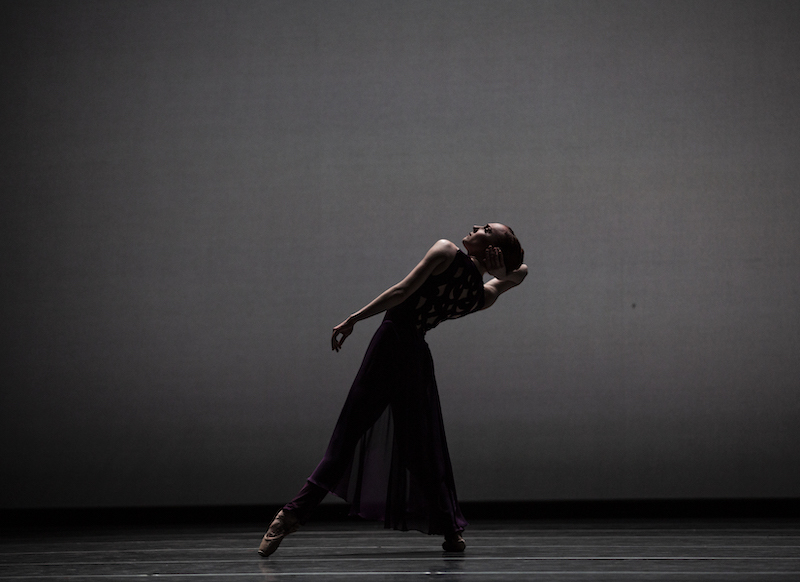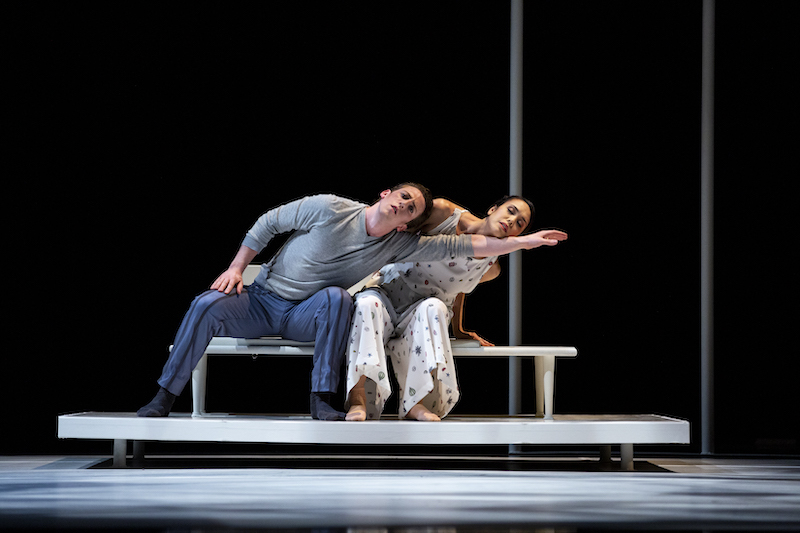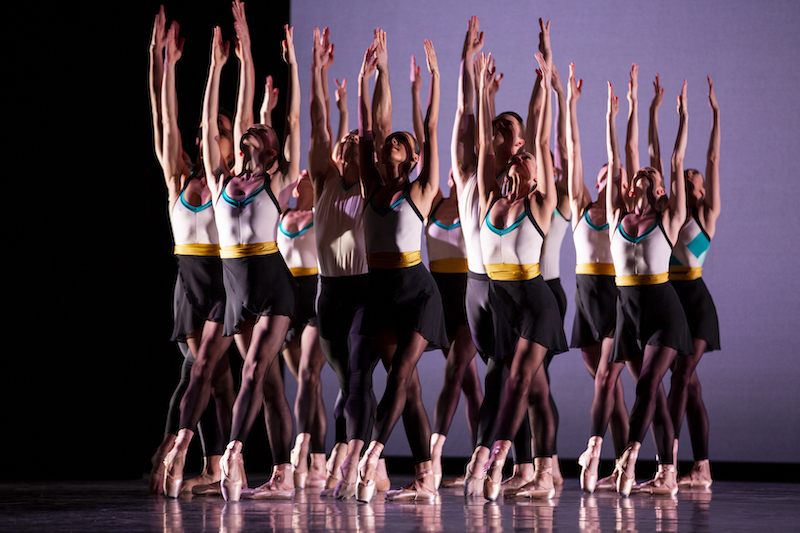The Triangularity of Dance
Review of Director's Choice at Pacific Northwest Ballet
Written by Elisabetta Pierazzi, during TeenTix’s Theater & Dance Press Corps Intensive.

PNB Artistic Director Peter Boal has exalted the path of ordinary life, and sometimes that of thousands of dancers, selecting three different productions that are both well linked and assorted, giving the public a real and proper representation of the stages in which the individual audience member can be encountered.
The number three is one of the recurrences that the audience can see in the production: three different acts, three different stories by three different choreographers. Matthew Neenan's "Bacchus" opens the show, continuing with "The Trees The Trees" by Robyn Mineko Williams, and the curtain falls on the latest movements Justin Peck's "In the Countenance of Kings." The minimalism of the neoclassical ballet is a perfect conductive line for the different technical aspects. The lights and the dancers communicate the stories and emotions instead of extravagant or pompous costumes, cumbersome set design, or too-perfect lines in the movements. All this makes us as audience members focus more on the feeling of self-recognition as if to say ''This is me! ''

At the opening of the curtain for “Bacchus,” guest conductor Doug Fullington accompanies the choreography of Matthew Neenan with a direct and pungent music. With ''Bacchus" the viewer's journey begins through the metaphor of the party. In fact, the god Bacchus, in Latin mythology (Dionysius for the Greek), represents wine and the grape harvest, as well as the pleasure of the senses and fun, and for this reason it was invoked in the properly called bacchanal acts, which were the pinnacle of this immense passion. Therefore, the choice of costumes by Mark Zappone is combined with this meaning. The dancers wear these short and soft purple tunics, which go to recall the lightness and light-heartedness of the wine. So, we start with joy and festive feelings, then moving from being permanently aware of the state of tipsiness. If it is true that ''in vino veritas,” here, the expression of sentiment is expressed at the ninth power. In this case, the role of the triangle is fundamental, which will be like a pole star throughout the performance of the show. Drunken jealousy is expressed through the triangular concept of "I-you-she.” The movements become slower and rhythmic, but in the same way, they are decisive above all for those involved in triangular dynamics. Every single step is full of energy and feelings that are no longer suppressed thanks to the effect of alcohol. As many have experienced, this kind of clouded mental state then goes back to a sort of struggle between dependence and independence from the partner, and then the normal confrontation with the figure of the lover. The themes in “Bacchus” are obvious as veracity is combined with fragility, creating a perfect equilibrium that demonstrates how, in the end, it is shoulders of the same back.
We then move to "The Trees The Trees,” choreographed by Robyn Mineko Williams. It is no coincidence that such an introspective work, which aims at a personal and profoundly intimate search for oneself, has been choreographed by a woman. Throughout the course of the thesis, issues that a man would face with another perspective are being touched. The desire for independence, of a family, of the roller-coaster that can be a couple's relationship, are moved and touched by the words well spoken by the incisive poet Heather Christie, sung by Alicia Walter.

The minimalism that is approached in terms of the family environment, like the house, recurs in the set and the costume designs. Despite the slightly wide clothes, which could represent the American trend of wanting to be comfortable, or simply a feeling of tiredness and resignation that man experiences, in some periods, even within his own personal sphere, the sensuality and knowledge of the partner are palpable. It is also important how trust has its space well marked in the choreography. Indeed, it is striking how a dancer touches his partner's point shoe as if she were giving him access to her best, to what is a source of life and sustenance for her. Here, too, the triangle returns, but with a totally more melancholy approach that will then lead to a sort of personal war in her mind. The presence of a second woman catches her partner’s eye, who abandons her and her doubts and decides to share his passions with a fresh and new person.
''In the Countenance of Kings,” choreographed by Justin Peck with music by Sufjan Stevens instead expresses a light vision on the path of the dancer who starts from the dance school, to then reach the greats like, for example, that of Broadway. Justin Peck, the third and last choreographer, plays a lot with the carefree and the dreams of the dancer. The various levels of a career are emphasized, from the studies to the great debut.

The costumes suggest a carnival note in the small details of pastel colors, which recall the idea of Arlecchino, the Italian carnival mask. Therefore, it could be a little closer to how dancers are a kind of clay in the hands of choreographers: they are shaped in their lines and shapes, they are set in the emotions they have to express and in the looks, they can or cannot cast.
The triangle, instead, returns in the technical aspect of the main group choreography. We tend to exalt the company, the dance troupe, throughout the learning process. Finally, at the end of the show, there is the affirmation of the individual, and the curtain closes with only one male who releases power and energy.
Director's Choice is a very psychological work, but it does not cause any tiredness or heaviness in the audience. It appears smooth thanks to the targeted choice of sounds, words, and movements. This completeness of the various performances embraces and unites the different ages of the public: finally, even the most contemporary dance clears from ''youthful'' or ''naive'' ideas and meets the most difficult and rigid public, which is that of the past generations.
Lead photo credit: Pacific Northwest Ballet soloists Ezra Thomson and Dylan Wald, and corps de ballet dancer Christopher D’Ariano, with guest vocalist Alicia Walter in Robyn Mineko Williams’ The Trees The Trees. PNB is performing The Trees The Trees as part of DIRECTOR’S CHOICE, March 15 – 24, 2019. Photo © Angela Sterling.
Elisabetta Pierazzi is an Italian foreign exchange student at Chief Sealth High School.
This review was written as part of the Theater & Dance Press Corps Intensive.
The TeenTix Press Corps promotes critical thinking, communication, and information literacy through criticism and journalism practice for teens. For more information about other Press Corps programs including the Teen Editorial Staff or the TeenTix Newsroom, see HERE.

